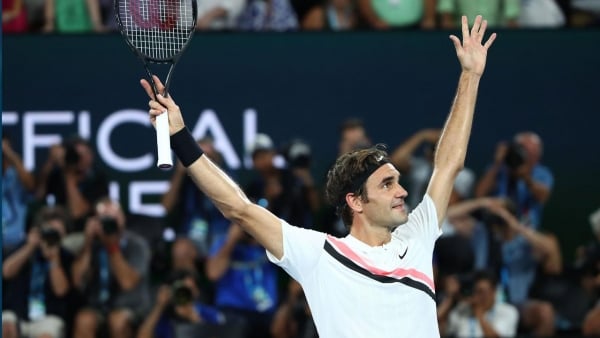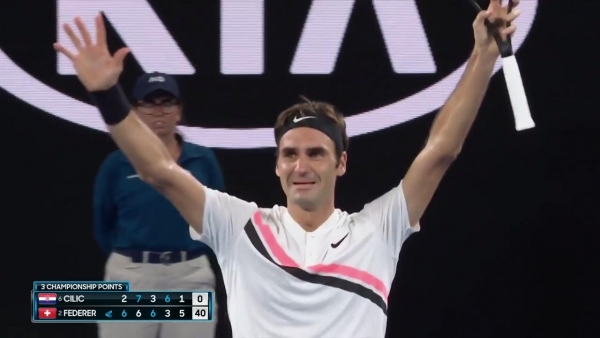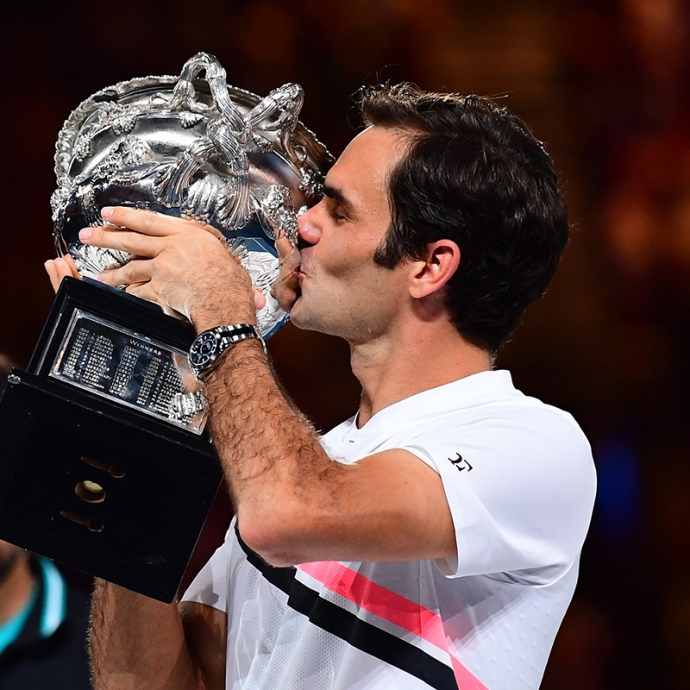Roger Federer struck early and struck often to win a record 20th Grand Slam title on Sunday night.
Federer defeated Cilic 6-2 6-7(5) 6-3 3-6 6-1 in a captivating Australian Open 2018 final that was completely dominated by short rallies.
Match report: Federer makes it 20 majors
The serve and return took centre stage over bruising baseline exchanges to deliver the Swiss maestro his sixth title Down Under.
The line in the sand in the final was clearly the fourth shot landing in the court. Two shots for the server, two for the returner, and then daylight.
Rally Length
0-4 Shots = 76% (212)
5-8 Shots = 19% (52)
9+ Shots = 5% (16)
North of three out of every four points for over three hours had just a maximum of four shots - or two shots for each player. Federer ultimately triumphed because of his performance in the big pool of short points.
Federer had a massive 28-point advantage in the 0-4 shot rally length. He crafted his advantage with hitting his spots, better serving, making more returns, and attacking immediately with his serve +1 and return +1 combinations. Federer hit 24 aces in the final, which was eight more than Cilic’s 16. Cilic came into the final with 107 aces, while Federer had just 71.
Cilic out-aced Federer to the final, but the tables were turned with the silverware on the line. The same dynamic played out in the 2017 Wimbledon final between these two players as well. In typical Federer fashion, his favorite first serve locations on both the deuce court and ad court were out wide.
Federer first serve location
Deuce court
Wide 26
Body 2
Center 22
Ad court
Wide 17
Body 2
Center 15
Cilic roped a couple of spectacular forehand return winners cross-court during the final, but overall Federer owned this specific serve location. Cilic only put 38 per cent (13/24) of Federer’s wide slice serves back in play. The Swiss cleverly dropped the power level on a lot of these wide serves, electing to pull Cilic off the court with heavy slice, making the ball cut more away from the 6’6” Croatian. Cilic put a higher 54 per cent (19/35) of his backhand returns back in play in the deuce court.
Overall, Federer had 48 serves unreturned for the match, while Cilic only had 41. Again, these numbers were in Cilic’s favor leading into the final, but Federer owned them in the last match of the tournament.
Serve and volley was a strategic play that Federer employed seven times in the final, winning all seven points. Federer won 80 per cent (41/51) of his serve and volley points for the tournament. Those 51 points represent eight per cent (51/603) of all first and second serve opportunities.
The only area of Federer’s game that was not humming was making first serves when facing break point. Overall, he faced nine break points in the final, and only made a first serve on three of them. Cilic faced 13 break points, and made a first serve on eight of them.
Is there any coincidence that this 36-year old is still going so strong by organising his game around short, quick hitting points rather than grinding out long points that add wear and tear to his body?
The renaissance of Roger is all about dictating at the start of the point. It’s a blueprint to take titles for players at all levels of our sport.


